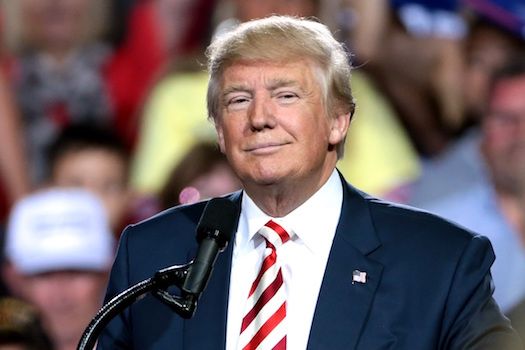Opioid Threat Grows to National Emergency, Study Shows Mortality Rates Are Even Worse
Within a week of a Presidential committee tasked with overseeing the epidemic, a study has shown national addiction drug death rates are understated.

In just this past week, the scope of the opioid epidemic has escalated beyond its already critical state.
On Thursday afternoon, President Donald Trump declared the addiction medicine epidemic a national emergency, an official declaration of which he said his administration is "going to draw up."
"It’s a national emergency," Trump said. "We’re going to spend a lot of time, a lot of effort and a lot of money on the opioid crisis."
Just the week before, a commission designated by President Donald Trump to analyze the epidemic called on the president to declare it an emergency, which when made official will set forth capabilities of action by governing entities such as Congress to combat the epidemic.
The commission, headed by New Jersey Governor Chris Cristie, also described the reach and ruination of addiction medicine in biting terms, in an interim letter issued to Trump.
"With approximately 142 Americans dying every day, America is enduring a death toll equal to September 11th every three weeks," the letter read.
The commission used this comparison to note then-President George W. Bush's efforts to use "every tool at our disposal" to appropriately respond to the September 11 terrorist attacks.
Declaring the opioid epidemic a national emergency — under either the Public Health Service Act or Stafford Act — similarly provides national leaders the tools to fight the epidemic, according to the commission.
"Your declaration would empower your cabinet to take bold steps and would force Congress to focus on funding and empowering the Executive Branch even further to deal with this loss of life," the letter read. "It would also awaken every American to this simple fact: if this scourge has not found you or your family yet, without bold action by everyone, it soon will."
The commission supplementally advised Trump grant waiver approvals in all states, in order to expedite patient treatment options that are prone to barriers rom the federal Institutes for Mental Diseases DRAFT 3 (IMD) exclusion within the Medicaid program. Similar to the US Food and Drug Administration (FDA), the commission advocated for improved and mandated medicine prescription education for all healthcare providers.
The letter also shows advocation for providing naloxone to law enforcement, and establishing federal incentive for improved Medication-Assisted Treatment (MAT) access by facilities — among other law enforcement-based amendments to addressing the epidemic.
A final draft of this letter is projected for public purveyance in the fall, with an additional set of detailed recommendations that, according to the commission, would "ensure that the Federal Government operates as a strong partner in the fight against addiction and the opioid crisis."
That fight is an even greater one than the commission had projected. A study published this week revealed that corrected mortality rates due to opioid and heroin abuse are actually 24% and 22% greater than previously reported, respectively.
The study — led by Christopher Ruhm, PhD, professor of public policy and economics at the University of Virginia's Frank Batten School of Leadership and Public Policy — calculated mortality rates directly from death certificates.
Ruhm then compared the corrected rates that "imputed drug involvement when no drug was specified." The results showed that, particularly in states such as Pensylvania, New Jersey, Indiana, Louisiana and Alabama, drug-related deaths were notably understated.
In an interview with NBC News, Ruhm said he would advise the Presidential commission overseeing the opioid epidemic recommendations to consider the most accurate statistics a "crucial first step towards developing policies aimed at stemming the fatal drug epidemic."
"This is particularly important when we have scarce funds to allocate and so would want to target them at the hardest hit areas," Ruhm said.
Trump gave a briefing regarding the epidemic from Bedminster, New Jersey, Tuesday afternoon. The best way to prevent further growing addiction and mortality rates, Trump said, "is to prevent people from abusing drugs in the first place."
"If they don't start, they won't have a problem," Trump said. "If they do start, it's awfully tough to get off."
Trump also discussed law enforcement efforts, both locally and at the border of Mexico, where he said "much of this comes in."
Regardless of where experts and leaders are pointing towards causes of concern, the overall threat of opioid addiction is becoming more pressing to them.
"We have no alternative, we have to win for our youths," Trump said Tuesday. "We have to win for our young people."
A digital copy of the President's commission interim report was made available online.
The study, "Geographic Variation in Opioid and Heroin Involved Drug Poisoning Mortality Rates," was published online in the American Journal of Preventive Medicine.
Related Coverage
What Is The Most Cost-Effective HCV Drug Regimen?